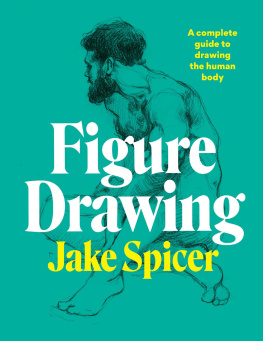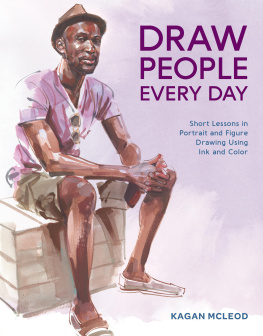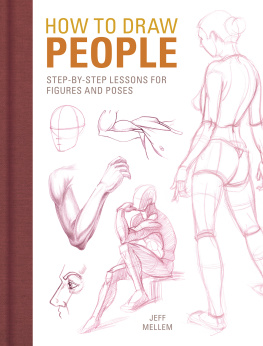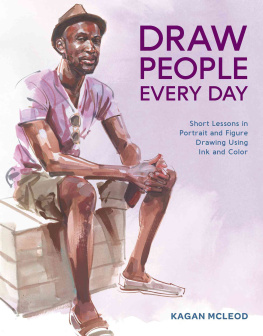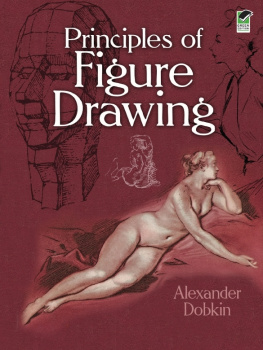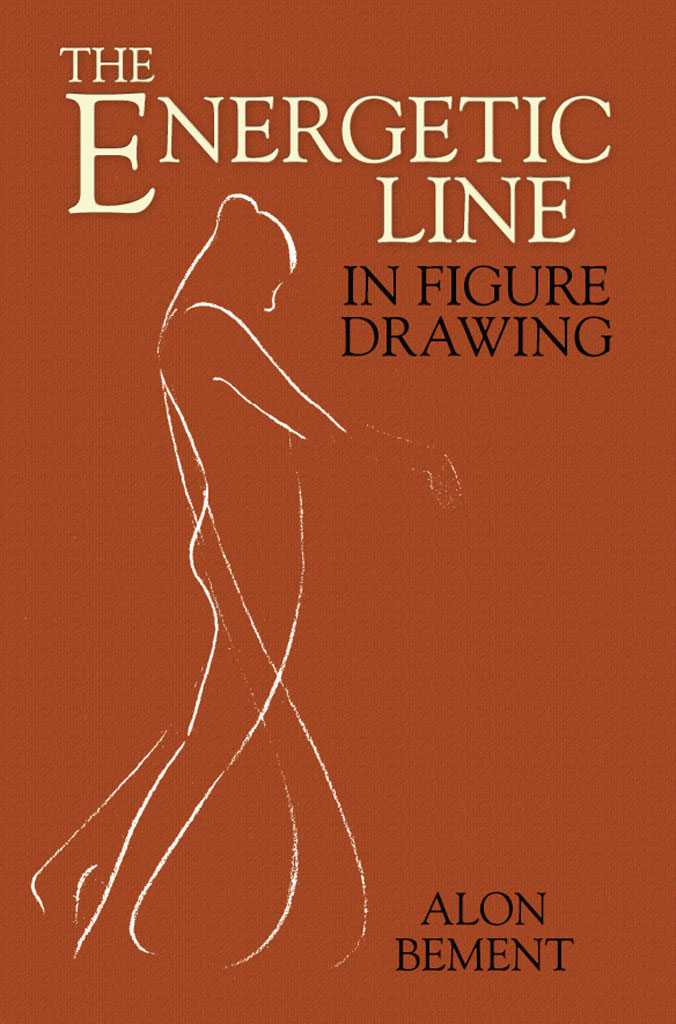THE
ENERGETIC LINE
IN FIGURE DRAWING
THE
ENERGETIC LINE
IN FIGURE DRAWING
ALON
BEMENT
DOVER PUBLICATIONS, INC.
Mineola, New York
Bibliographical Note
This Dover edition, first published in 2009, is an unabridged republication of the revised edition of the work, originally published by The Gregg Publishing Company, New York, in 1939 under the title Figure Construction: A Brief Treatise on Drawing the Human Figure [first publication: 1921].
Library of Congress Cataloging-in-Publication Data
Bement, Alon, 18761954.
[Figure construction.]
The energetic line in figure drawing / Alon Bement.
p. cm.
This Dover edition, first published in 2009, is an unabridged republication of the revised edition of the work, originally published by The Gregg Publishing Company, New York, in 1939 under the title Figure Construction: A Brief Treatise on Drawing the Human Figure [first publication: 1921].
ISBN-10: 0-486-47012-1
eISBN 13: 978-0-486-14678-2
Figure drawingTechnique. Human figure in art. I. Title.
NC765.B36 2009
743.4dc22
2008055572
Manufactured in the United States of America
Dover Publications, Inc., East 2nd Street, Mineola, N.Y. 11501
WHAT IS LIFE DRAWING?
By
ARTHUR
Late Professor of Fine Arts, Teachers College,
Columbia University
THE average artist will answer this question by saying that it is a tool of the trade. If he is bound by academic tradition he will admit that it is of first importance in art training. Many art teachers will agree with the academic artist. Others will hold that life drawing has a special, not a general, place in the scheme of art education and is, of course, necessary in certain fields, such as illustration, figure painting, portraiture, and costuming.
Valuable service is rendered to the world by him who recognizes a need, enters upon a course of experiments to meet it, and makes public the result of his experiments. This is what Professor Bement has done, as set forth in the following pages. He has given one answer to the question at the head of this article, and has made a contribution that will be of direct and practical value to art education. It is the result of a need at Teachers College (Columbia University) of finding some method of teaching life drawing whereby the students in costume design could gain a sufficient knowledge of the human figure to meet the requirements of their craft. Many of the students were inexperienced in drawing and none of them could give the time to a professional art school drill. The regular traditional method that leaned upon anatomy, with accuracy as an aid, failed with this class of students. It was necessary to find another way. This book shows us the way.
Accuracy in itself is not art, and to attempt to make it the aim by freehand methods is a waste of effort, except possibly for those intending to be professional artists. To most young students accuracy is practically unattainable and, even if it could be attained, its value would be doubtful, for in figure drawing the important things to appreciate are life and Action is expressed by the direction of the lines, and life lies in the quality of the drawn line. Life is felt; it never comes through imitation. In Japanese sketch books of the last century are line drawings of figures and animals where life and action are given by one or two lines. Children draw readily and naturally in this wayby seeing the subject as a After that is realized it is easy to add details.
Freehand drawing would progress farther if we looked upon it as expression rather than Students will draw better, if they are led to appreciate fine rhythm, good spacing, and unity in masterpieces of line, not only in drawings, but in architecture, sculpture, and pattern, and if they are encouraged to create these qualities by simple exercises with brush and pencil.
Professor Bement has taken advantage of natural aptitudes and has called into action those creative powers that will work if we will only give them a chance. He is not proposing any short cuts, but shows that there is more than one road to excellence. His book will bring a sense of freedom and courage to many young students and should be most appreciatively received by the teachers of art.
May 2,
PREFACE
The methods of drawing presented in this book are based on four assumptions:
it is easier to draw the figure in action than in the half action employed in life classes, or in the rigid bi-symmetrical attitudes shown in books of drawings and anatomy.
except when seen from the front, the action of the body may be expressed in nearly every instance by two linesa convex and a concave curve.
the beginner should be instructed in drawing the figure as a whole before he studies the detached parts, because drawing the detached parts first has a tendency to establish in the mind these parts in a position that is difficult to combine with the other parts of the figure when in action.
the time employed in making each stroke in a drawing should be for great artists have been masters of technique, and technique presupposes skill, and skill, in turn, presupposes speed.
We have, therefore, in the following lessons, laid great stress on the reduction of the time allowed for each stroke from the beginning. We have reversed the usual procedure, believing that the inherent good qualities of the first rapidly-drawn line will be retained through the entire procedure. We believe also that it is better to make five drawings rapidly in order to procure one good one, than to spend the same time making corrections on the first.
This course was evolved during the first year of the war, out of a condition which arose from the shortage of models, a shortage that threatened to interrupt the work of the life class. During those days an attempt was made by the instructor to carry forward the work of the class by detailed explanations of the action of the figure, illustrated by drawings on the blackboard which were redrawn by the students. The early results obtained in this way were disheartening both to the instructor and to the students. But finally, by using construction lines and by establishing a time limit for each drawing, the advantage of such a procedure became apparent. From that time on the students worked with interest and enthusiasm. When they resumed drawing from the model toward the end of the year it was found that this class more than equalled in speed and power the classes that had drawn continuously from life during previous years.
The drawings reproduced in this book were chosen from the regular daily work of a class of young women who had had no previous experience in drawing from life. The class met once a week for three hours. Four minutes was the longest time spent on any drawing, except in the cases of Plates XXIV and XXV, where three additional minutes were allowed for detail.
While this book is designed primarily to meet the needs of students of high schools and colleges who cannot reach life classes, it is confidently believed that it will be of equal assistance to students working from the model, as it is a record of the exact procedure of a very successful life class at Teachers College, Columbia University.
CONTENTS
What is Life DrawingIntroduction by Arthur Wesley Dow
Preface
Illustrations



